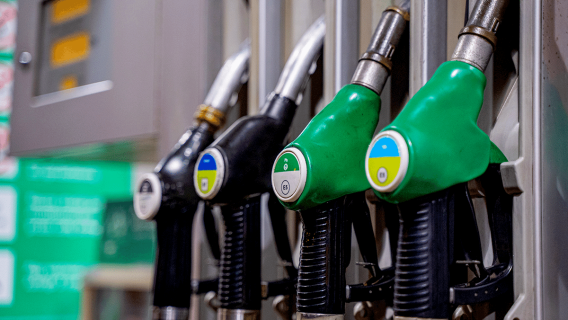This has, undoubtedly, been a tougher start to the year than most investors were hoping for. Growth investors, in particular, are seeing red. The Nasdaq Composite is down 8% and the iconic ARK Innovation Fund (ARKK) has lost 20%.
In fact, a report from Sundial Capital Research shows that roughly 40% of Nasdaq companies have lost half or more of their value, relative to their 52-week highs.
The investing climate has clearly changed. No longer can investors count on zero interest rates, immense bond buying by the Fed or exceptional fiscal stimulus to propel hyper-growth stocks ever higher. The constant drumbeat of rising interest rates is weighing on these vulnerable stocks as they have little valuation support.
How far will interest rates rise? Nobody knows, but if inflation continues to run at a 7% rate, while 10-year Treasury yields are a paltry 1.75%, interest rates could grind a lot higher. Given this possibility, investors may want to look for alternatives.
One alternative is energy companies. We highlighted this in our September 2021 note to our subscribers, “Oil E&Ps – Time to Buy,” in which we recommended a slate of five oil company stocks that the market was ignoring. The attractive backdrop remains in place today: resilient oil demand that isn’t likely to be fully met by OPEC+ and other suppliers, weak investor interest due to ESG, climate and commodity volatility concerns, and high free cash flow yields.
Oil company stocks may not have the trendiness of hyper-growth companies, but they offer real value. Many generate enormous free cash flow after capital spending, carry solid balance sheets and offer attractive dividend yields. On another metric, free cash flow yield, which compares the free cash flow to the market value, many oil company stocks also look remarkably inexpensive.
Here are three that jump out:
3 Energy Stocks to Consider
Energy Stock #1: ExxonMobil (XOM)
Once the largest stock in the S&P 500, ExxonMobil has tumbled to a humbling No. 24 ranking with a 0.7% weight. That’s about a tenth of leader Apple’s index weighting. The company’s strategic blunder – spending heavily on new oil projects even as oil prices collapsed from $100 to the $50 range after 2014 – as well as its stinging loss of board seats following last year’s activist campaign, weigh on investor sentiment. Yet, Exxon is becoming a much-improved company: restraining its capital and operating expenses, improving its climate impact, paying down its debt and distributing more of its cash to investors. The shares remain below their pre-pandemic level. Exxon stock offers what looks like a sustainable 5.2% dividend yield – the highest among the majors.
Energy Stock #2: APA Corporation (APA)
The formerly named Apache Corporation produces about 70% of its oil and gas from the highly prolific and low-cost Permian Basin and other areas of Texas. The balance comes from Egypt (18%) and the North Sea (12%). About 75% of its output is oil and essentially none of its production is hedged. While the U.S. segment provides a solid base, the Egypt operations (67% owned by Apache, 33% owned by Sinopec) offer a source of upside. Another source of potential upside comes from Apache’s early success in Suriname, just north of Brazil, where newfound oil could generate considerable new profits starting in about five years. Little value is being assigned by investors to the Suriname opportunity despite its sizable potential, or to its stake in Altus Midstream. The shares trade at a 15% free cash flow yield.
Energy Stock #3: Ovintiv (OVV)
Previously named Encana Corporation until 2019, when it relocated to Denver from Canada, Ovintiv is one of the oldest E&Ps in North America. Its assets are primarily in the Permian and Anadarko basins in the US and the Montney Basin in Canada. About half of its production is oil and related liquids. While much of its 2022 production is hedged, it may choose to leave future years unhedged and thus fully participate in higher oil and gas prices. After a withering campaign by respected activist investor Kimmeridge, the company has a new CEO, a refreshed board and improved governance. Free cash flow, along with proceeds from its divestiture program, will help reduce its debt. Once its leverage target is reached, Ovintiv will likely pay out substantial cash to shareholders. OVV shares trade at a 18% free cash flow yield.
Do you have any oil company stocks in your portfolio? Tell us about them in the comments below.

